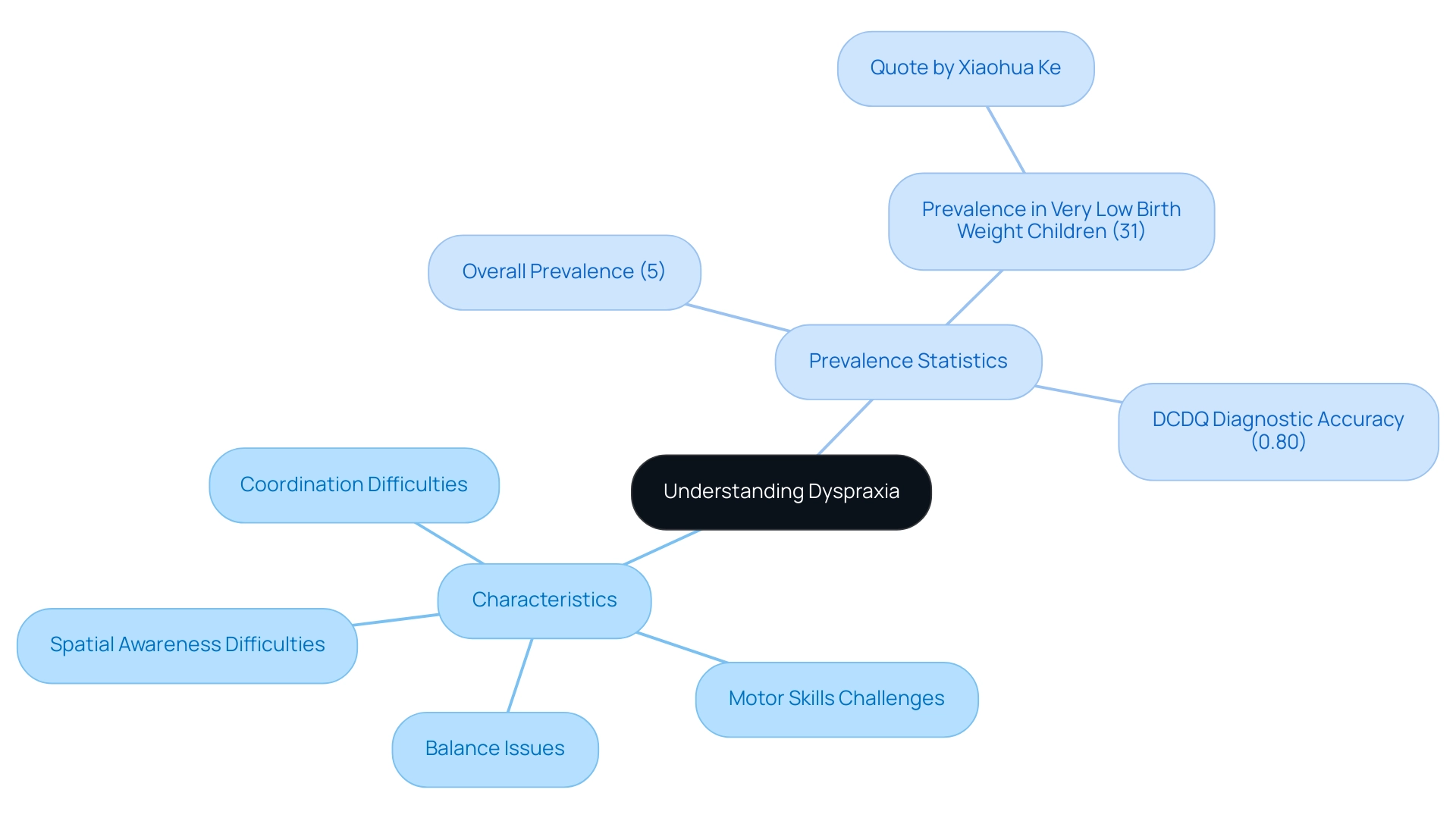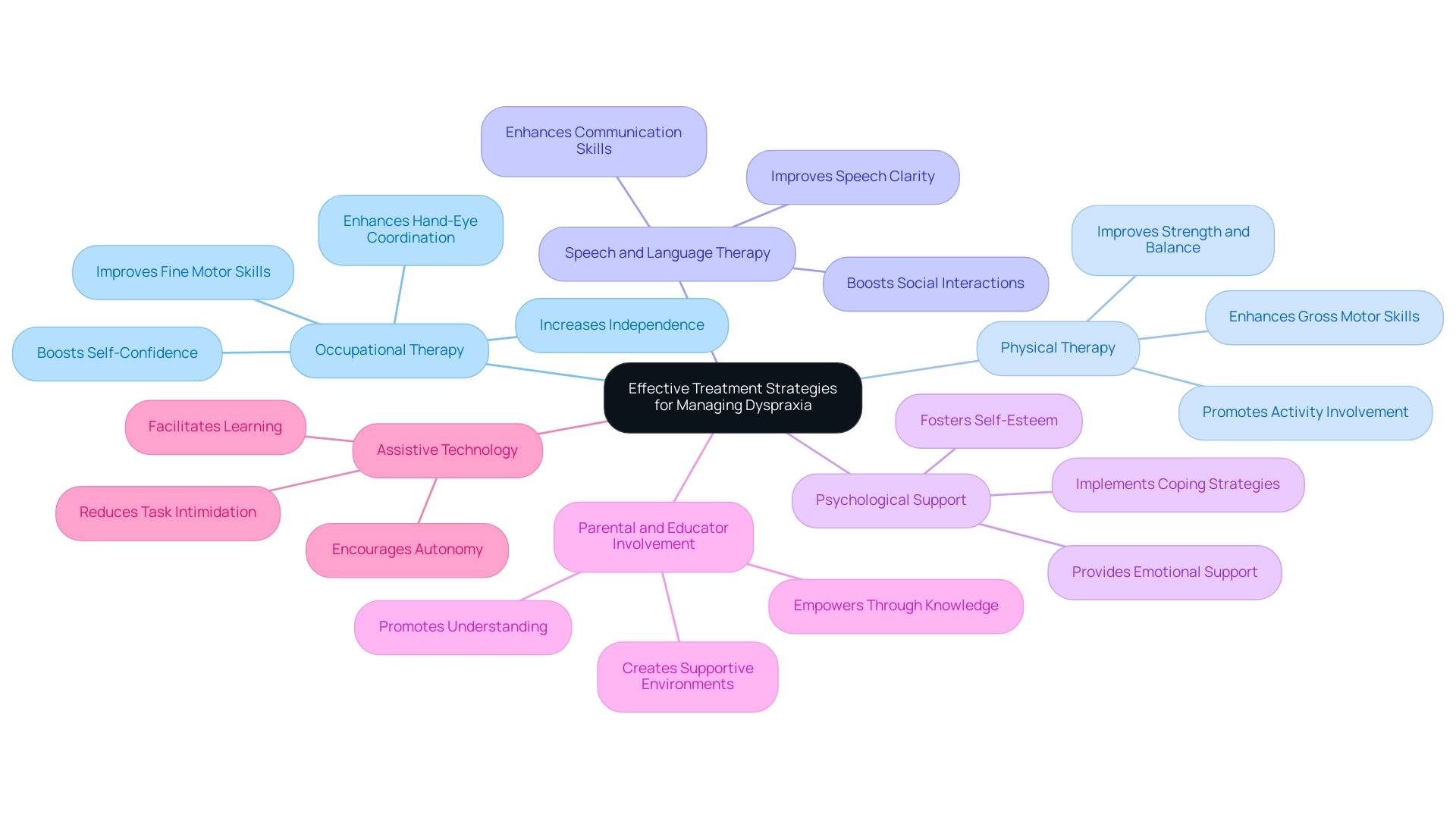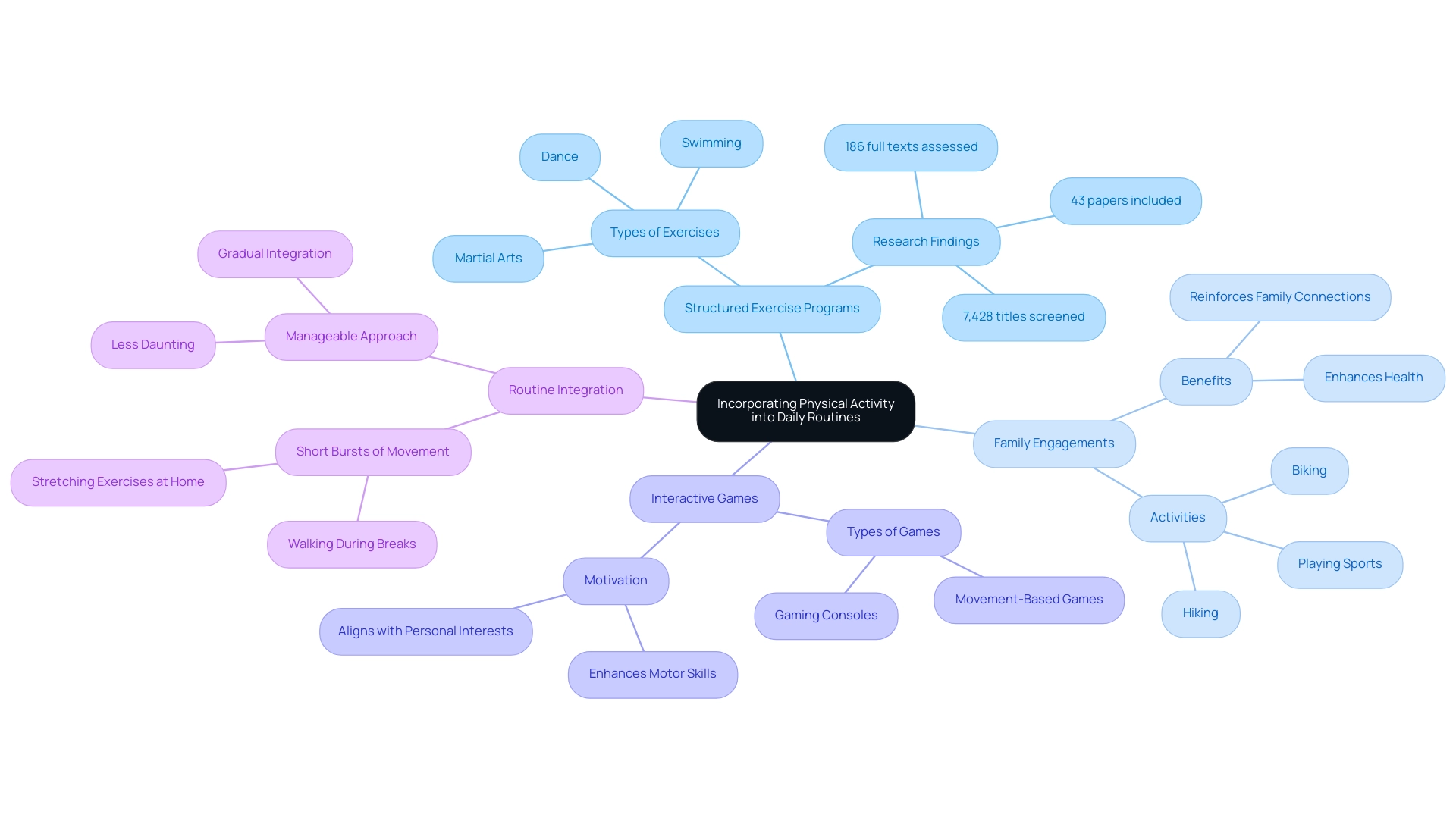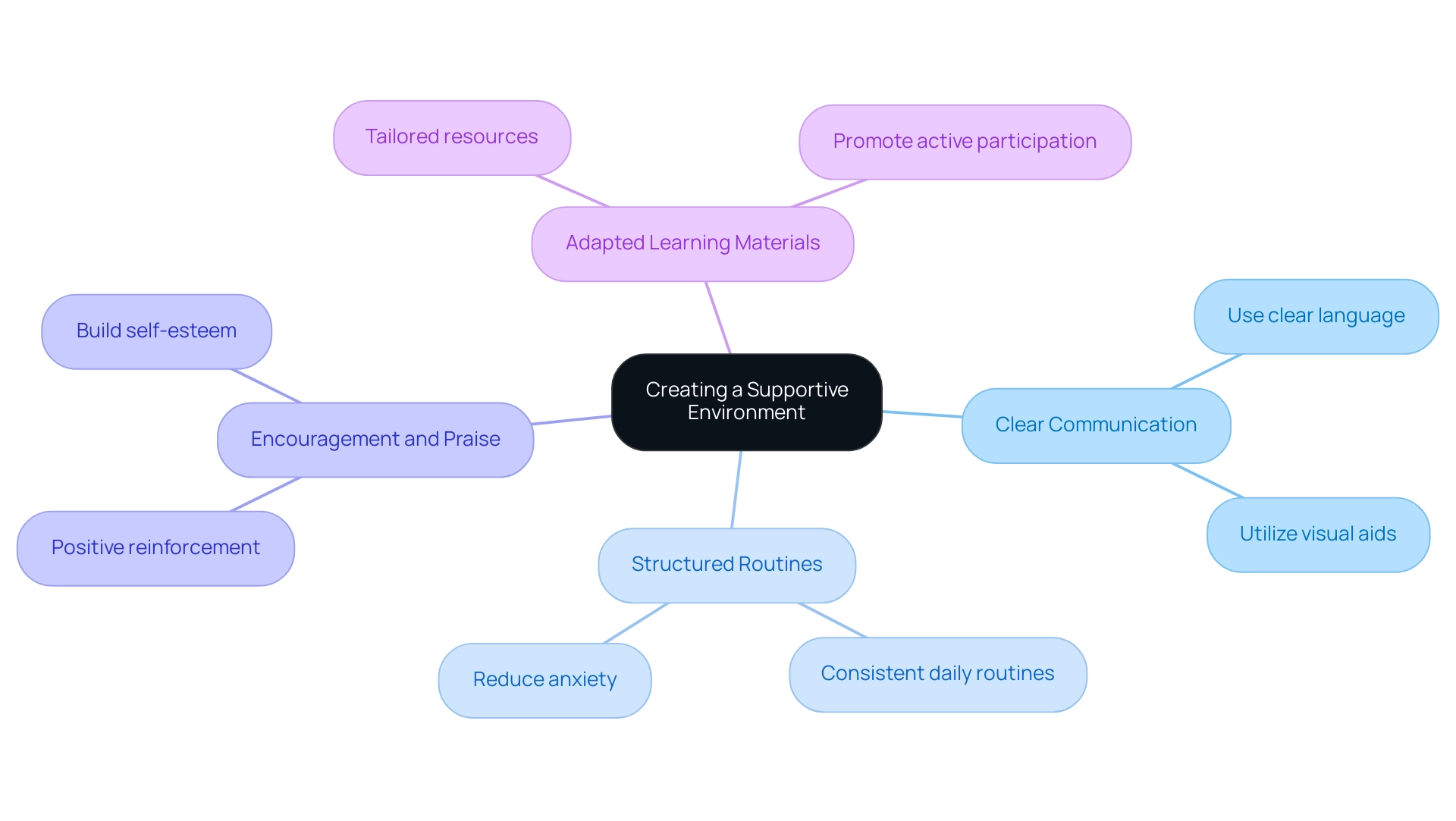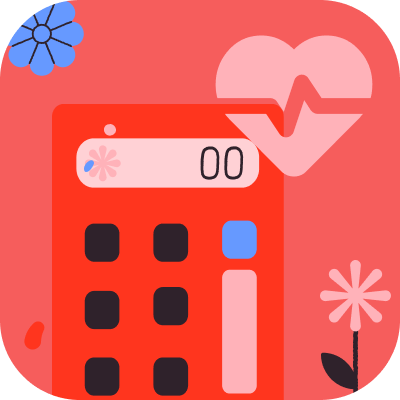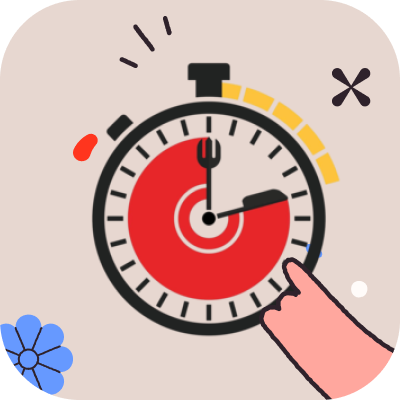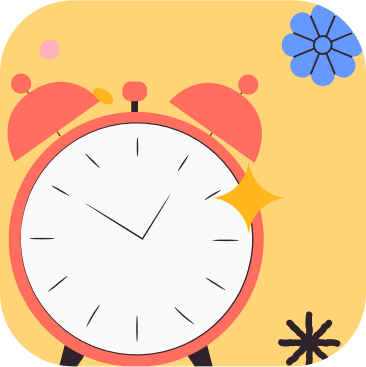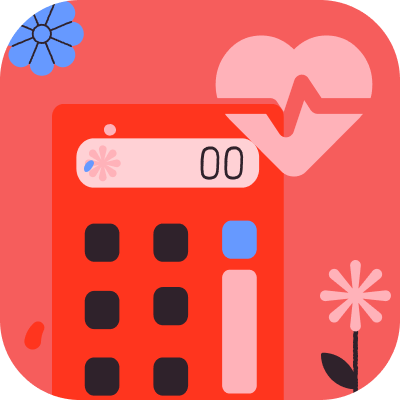Introduction
Dyspraxia, or Developmental Coordination Disorder (DCD), poses significant challenges for those affected, impacting their ability to perform coordinated movements and manage everyday tasks. This neurological condition not only affects motor skills but also influences emotional well-being and social interactions.
Understanding the intricacies of dyspraxia is crucial for educators, parents, and healthcare professionals who strive to provide effective support and interventions. This article delves into the following aspects of dyspraxia:
- Definition and characteristics of dyspraxia
- Effective treatment strategies
- Importance of creating supportive environments at home and in schools
By examining these elements, the article aims to equip stakeholders with the knowledge necessary to foster improved outcomes for individuals navigating the complexities of dyspraxia.
1. Understanding Dyspraxia: Definition and Key Characteristics
Dyspraxia, clinically recognized as Developmental Coordination Disorder (DCD), is a neurological condition that significantly impairs an individual's ability to plan and execute coordinated movements. Among the defining characteristics of this condition are challenges with both fine and gross motor skills, balance issues, and difficulties in spatial awareness. Individuals with coordination difficulties often encounter obstacles in tasks requiring sequencing, such as writing or using utensils.
Recent studies indicate that the prevalence of DCD stands at approximately 5%, with particularly high rates among preterm and low birth weight children. Notably, the prevalence of DCD in very low birth weight children is reported to be 31%, as highlighted by Xiaohua Ke. Furthermore, the area under the curve for the DCDQ diagnostic accuracy is 0.80, underscoring the effectiveness of this assessment tool in identifying DCD.
The conclusion of a recent case study reiterated the importance of
ongoing screening and follow-up for young children, especially those at increased risk, ensuring that they receive the necessary resources to thrive. These statistics and insights underline the importance of understanding dyspraxia characteristics for educators, parents, and healthcare professionals involved in dyspraxia treatment, as they are tasked with providing appropriate support and interventions.
2. Effective Treatment Strategies for Managing Dyspraxia
-
Occupational Therapy: This therapeutic approach emphasizes improving a person's ability to participate in daily tasks. Occupational therapists work with clients to develop fine motor skills, improve hand-eye coordination, and adapt tasks to enhance manageability. Regular therapy sessions can lead to notable improvements in independence and self-confidence, supporting individuals in navigating their environments more effectively. Recent
qualitative studies emphasize the significance of these adaptations, illustrating how children with developmental coordination disorder (DCD) often strategize to handle daily tasks and integrate socially. Notably, nearly 50% of studies on this topic have used a variety of terms to describe developmental motor coordination difficulties, underscoring the complexity of diagnosis and intervention.
-
The aim of dyspraxia treatment is to improve gross motor skills and overall coordination. Therapists use targeted exercises and tasks that enhance strength, balance, and coordination. This method not only promotes skill development but also encourages involvement in activities, a crucial component for overall health. Evidence indicates that effective physical therapy interventions are crucial in dyspraxia treatment, resulting in significant enhancements in motor functioning and leading to improved quality of life for people with coordination difficulties. However, findings from a meta-analysis indicate a mix of favorable and unfavorable outcomes for different interventions, emphasizing the need for careful interpretation of treatment effectiveness.
-
Speech and Language Therapy: For individuals facing difficulties with verbal communication and articulation due to motor planning issues, speech and language therapy can be particularly beneficial. Speech therapists utilize a variety of techniques aimed at improving speech clarity and communication skills, which can lead to enhanced social interactions and increased confidence. As noted by Brown D,
1In the absence of any known neurological condition or intellectual impairment, this condition is the inability to plan, organize, and coordinate movement
, underscoring the critical need for effective intervention strategies.
Psychological Support: Dyspraxia often results in emotional and behavioral challenges. Engaging with a psychologist or counselor provides essential support for dyspraxia treatment and helps in managing anxiety and fostering self-esteem. These professionals can implement coping strategies and provide emotional support, which are essential for the comprehensive management of this condition. Research indicates that addressing psychological aspects can significantly improve overall treatment outcomes.
-
Parental and Educator Involvement: Equipping parents and educators with knowledge about this condition is crucial for creating a supportive environment. Workshops and informational sessions can empower them with strategies to assist in daily activities, reinforcing a sense of belonging and understanding for those with the condition. This collaborative approach enhances the overall effectiveness of dyspraxia treatment strategies. The promotion of dyslexia and dyspraxia-friendly schools by Coffield M and O'Neill J further emphasizes the importance of educational environments in supporting these individuals.
-
Assistive Technology: The incorporation of technology can significantly aid people with coordination difficulties. Tools such as speech recognition software, specialized writing instruments, and applications designed for skill development can facilitate learning and communication, making tasks less intimidating. The application of assistive technology not only helps in skill development but also encourages increased autonomy.
Integrating a blend of these treatment strategies can effectively assist those with motor coordination challenges, resulting in enhanced skills and a better quality of life. As the terrain of coordination disorder management keeps progressing, remaining knowledgeable about the latest developments in occupational and therapeutic practices is essential.
3. Incorporating Physical Activity into Daily Routines
Integrating regular exercise into the daily habits of individuals is essential for improving their motor skills and overall health as part of dyspraxia treatment. The following strategies have proven effective:
-
Structured Exercise Programs: Participation in structured exercise programs—such as dance, martial arts, or swimming—offers a fun and supportive environment conducive to improving coordination and fitness levels.
Research indicates that these programs can significantly enhance motor performance, particularly when tailored to the developmental needs of participants. A comprehensive review screened 7,428 titles and abstracts, assessed 186 full texts, and identified 43 papers that support the effectiveness of such interventions.
-
Family Engagements: Family excursions that include exercise pursuits such as hiking, biking, or playing sports not only enhance health but also reinforce family connections.
These shared experiences can result in enhanced motivation and involvement in exercise, crucial for skill development.
-
Interactive Games: Engaging with interactive games that require movement, such as those found on gaming consoles, can motivate individuals to remain active while simultaneously enhancing their motor skills in an enjoyable manner. These tasks can function as excellent supplementary exercises that align with personal interests.
-
Routine Integration: Short bursts of movement incorporated into daily routines—such as walking during breaks or doing stretching exercises at home—can make exercise more manageable and less daunting. This approach enables people to slowly integrate movement into their routines without burdening them.
By encouraging exercise through these strategies, caregivers and educators can foster an atmosphere that not only improves motor skills but also contributes to the overall well-being of individuals receiving dyspraxia treatment. As highlighted by H.Z., there should be an emphasis on offering suitable and stimulating exercises tailored to the developmental needs and interests of the children, along with pertinent training for educators. Additionally, the case study titled '
Assessment of Motor Performance' illustrates the evaluation of motor skills through standardized tests, highlighting the effectiveness of tailored interventions in improving performance.
Such a focus on customized physical activities can substantially benefit children with developmental coordination disorder (DCD).
4. Creating a Supportive Environment at Home and School
Establishing a nurturing atmosphere for people with coordination difficulties is vital in both home and educational contexts. The following strategies can significantly enhance their learning experience and overall well-being:
-
Clear Communication: Employing clear and concise language when providing instructions is crucial. As Brown D. observes, "In the absence of any known neurological condition or intellectual impairment, this disorder is the inability to plan, organize and coordinate movement." Utilizing visual aids, such as charts or diagrams, can further improve comprehension and facilitate better engagement.
-
Structured Routines: Establishing consistent daily routines is an important aspect of dyspraxia treatment, fostering a sense of security for people with dyspraxia and helping them to anticipate what comes next, thereby reducing anxiety and confusion. This is particularly important considering that 26% of children with persisting developmental coordination disorder (DCD) had executive function deficits relative to age-normative data 2.5 years later, underscoring the need for structured environments.
-
Encouragement and Praise: Offering positive reinforcement for efforts, regardless of the outcome, is vital for building self-esteem. This encouragement motivates people to persevere through challenges, enhancing their resilience.
-
Adapted Learning Materials: Educators should consider using tailored learning materials that align with each student’s strengths and weaknesses. This approach ensures that people can engage fully with the content, promoting active participation in the learning process.
The experiences of children and young people with DCD highlight the impact of societal expectations and peer interactions on their self-worth. The case study titled "
Line of Argument Synthesis" illustrates how children developed strategies to cope with disablism, including seeking support and focusing on strengths, which can be integral to creating supportive environments.
By applying these strategies, parents and educators can establish an environment that not only supports those with motor coordination challenges but also enables dyspraxia treatment to help them excel in their daily lives, ultimately resulting in enhanced confidence and social inclusion.
5. Monitoring Progress and Adjusting Treatment Plans
Monitoring progress in people with dyspraxia is essential to ensure the effectiveness of treatment strategies. Effective practices for monitoring and adjusting treatment plans include:
-
Regular Assessments: Ongoing assessments are fundamental to evaluate advancements in motor skills, social interactions, and emotional well-being.
-
Feedback from Caregivers and Educators: Insights from caregivers and educators, who interact closely with the person, are invaluable for identifying progress and areas that require further support.
Their observations can guide treatment adjustments effectively.
-
Setting Specific Goals: Establishing clear, measurable objectives for therapy and personal development is crucial. Evaluating the achievement of these goals allows for an assessment of the effectiveness of current treatment strategies.
-
Flexibility in Treatment Plans: Treatment plans must be adaptable to reflect a person's evolving needs as they grow. This flexibility is vital for ensuring that therapeutic approaches remain relevant and effective over time.
In line with recent findings, including insights from the Impact for DCD study, which evaluated the unmet needs of children with Developmental Coordination Disorder (DCD) and found that 81.9% of children had a formal diagnosis, it is clear that a proactive approach to monitoring and adapting treatment can substantially improve outcomes.
This study also highlighted concerns about children's withdrawal from movement activities and insufficient therapy services, emphasizing the necessity for tailored interventions. Ke L. observed that > DCD-related research will continue to deepen along the research direction of multivariate, multidimensional, and multimodal <, further emphasizing the significance of addressing the potential challenges faced by persons with movement disorders, particularly when co-occurring conditions are present. By committing to regular monitoring and a willingness to adjust treatment plans, caregivers and healthcare professionals can significantly enhance the success of interventions for individuals with dyspraxia.
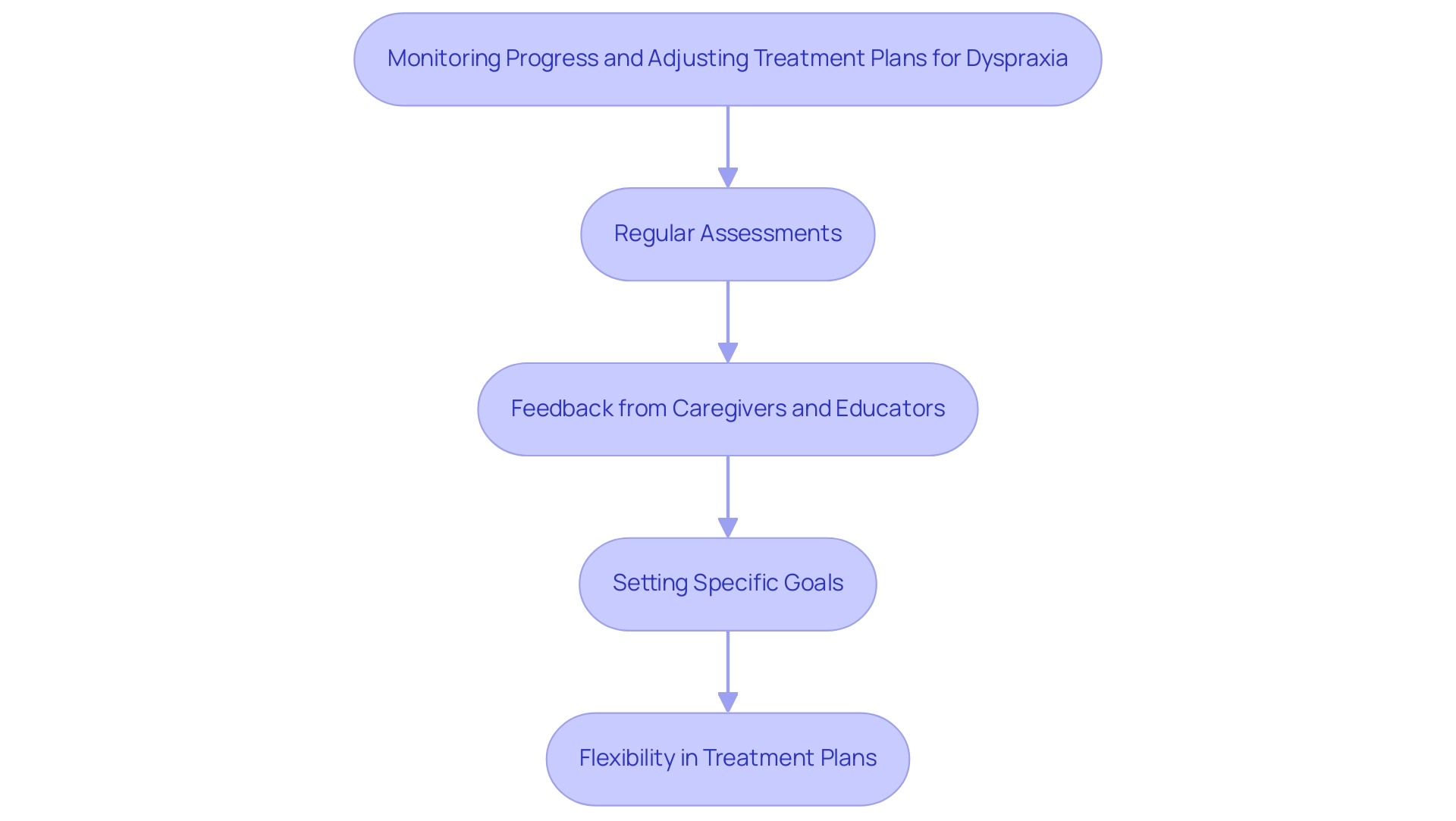
Conclusion
Understanding dyspraxia is essential for fostering an environment where individuals can thrive despite the challenges posed by this condition. The article has outlined the defining characteristics of dyspraxia, highlighting the significant impact it has on motor skills, emotional well-being, and social interactions. With approximately 5% of children affected, particularly those with preterm or low birth weight histories, there is a pressing need for awareness and understanding among educators, parents, and healthcare professionals.
Effective treatment strategies play a crucial role in managing dyspraxia. From occupational and physical therapy to speech and language interventions, these approaches not only enhance motor skills but also contribute to emotional support and confidence-building. The integration of assistive technology further empowers individuals, making daily tasks more manageable and fostering greater independence.
Creating supportive environments at home and in schools is equally vital. Clear communication, structured routines, and tailored learning materials can significantly enhance the experiences of those with dyspraxia, promoting inclusion and engagement. Monitoring progress through regular assessments and feedback is essential to ensure that treatment plans remain relevant and effective, adapting to the evolving needs of individuals.
By combining these insights and strategies, stakeholders can make a meaningful difference in the lives of those affected by dyspraxia. Promoting understanding, implementing effective interventions, and fostering supportive environments will ultimately lead to improved outcomes, empowering individuals to navigate their daily lives with greater confidence and success.
